
There are 214 moons in our solar system. Of these, 158 are confirmed and another 56 are provisional, meaning scientists suspect a moon exists or the moon has been seen only once. Of the 16 moons that have mean diameters of over 1,000 kilometers, four orbit Jupiter, four orbit Saturn, and four orbit Uranus.
The largest moon in the solar system is Ganymede, which orbits Jupiter. It measures 5,262 mean km and is followed closely in size by Titan, which orbits Saturn and measures 5,150 mean km. (A kilometer is roughly 0.62 miles.) Ganymede (pronounced “GAN uh meed”) is the ninth-largest object in the solar system, about 41% the size of Earth.
Ganymede is the only moon in our solar system with its own magnetic field. “The magnetic field causes auroras, which are ribbons of glowing, electrified gas, in regions circling the moon’s north and south poles,” according to the NASA Solar System Explorer.
Galileo Galilei discovered Ganymede on Jan. 7, 1670. It was named after a cupbearer of the Greek god Zeus, who was known as Jupiter to the Romans. Galileo originally thought Ganymede might be a star. These are the most unforgettable moments in space exploration.
Ganymede completes an orbit of Jupiter every seven days and three hours. It is made up of rock and frozen water in roughly equal parts. Frozen ice covers almost its entire surface.
According to The New York Times, the NASA Galileo spacecraft found what may have been water under the surface of this ice. The spacecraft flew by Ganymede six times between 1996 and 2000. JUpiter ICy moons Explorer will reach Jupiter in July 2031 and will spend four years exploring Jupiter and three of its moons: Ganymede, Callisto, and Europa. Here are 30 NASA inventions we still use everyday.
Click here to see the largest moon in the solar system
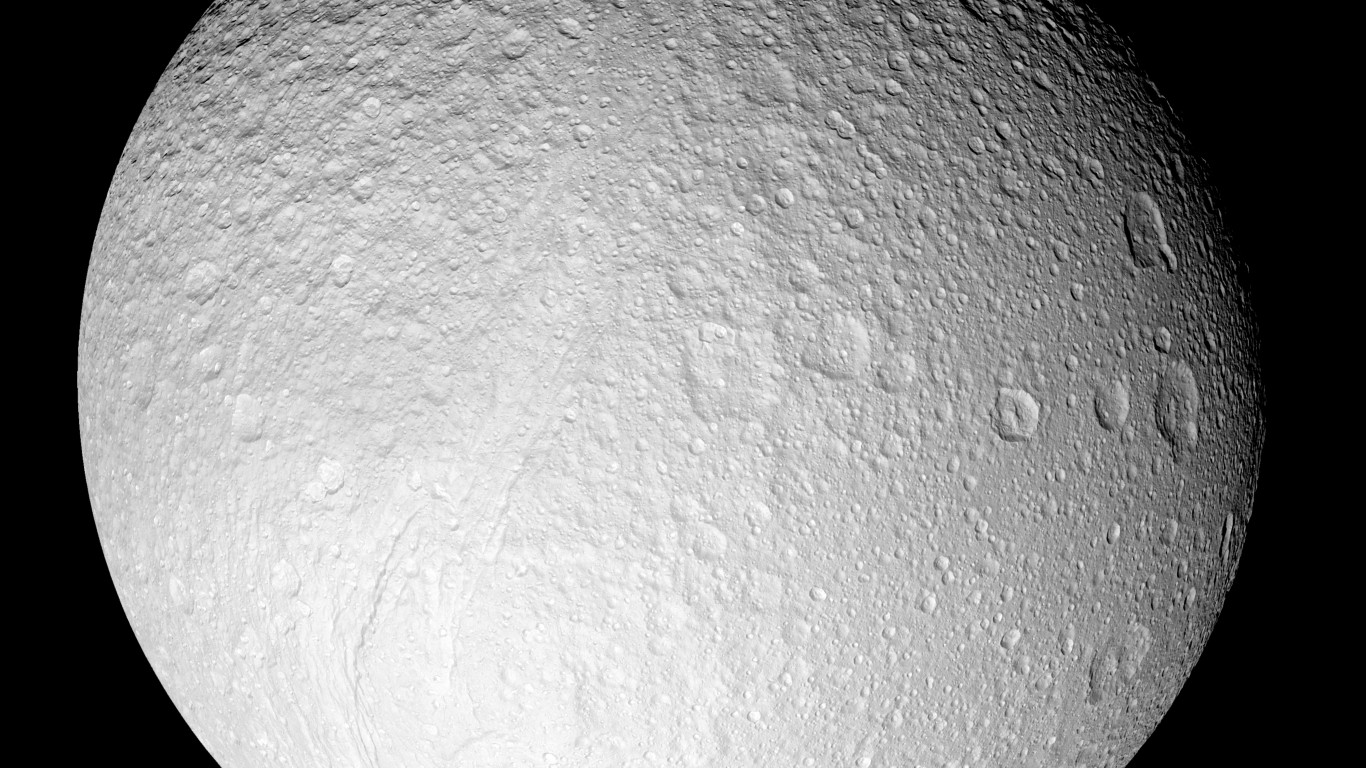
16. Tethys
> Planet: Saturn
> Mean diameter: 1,066 km
[in-text-ad]
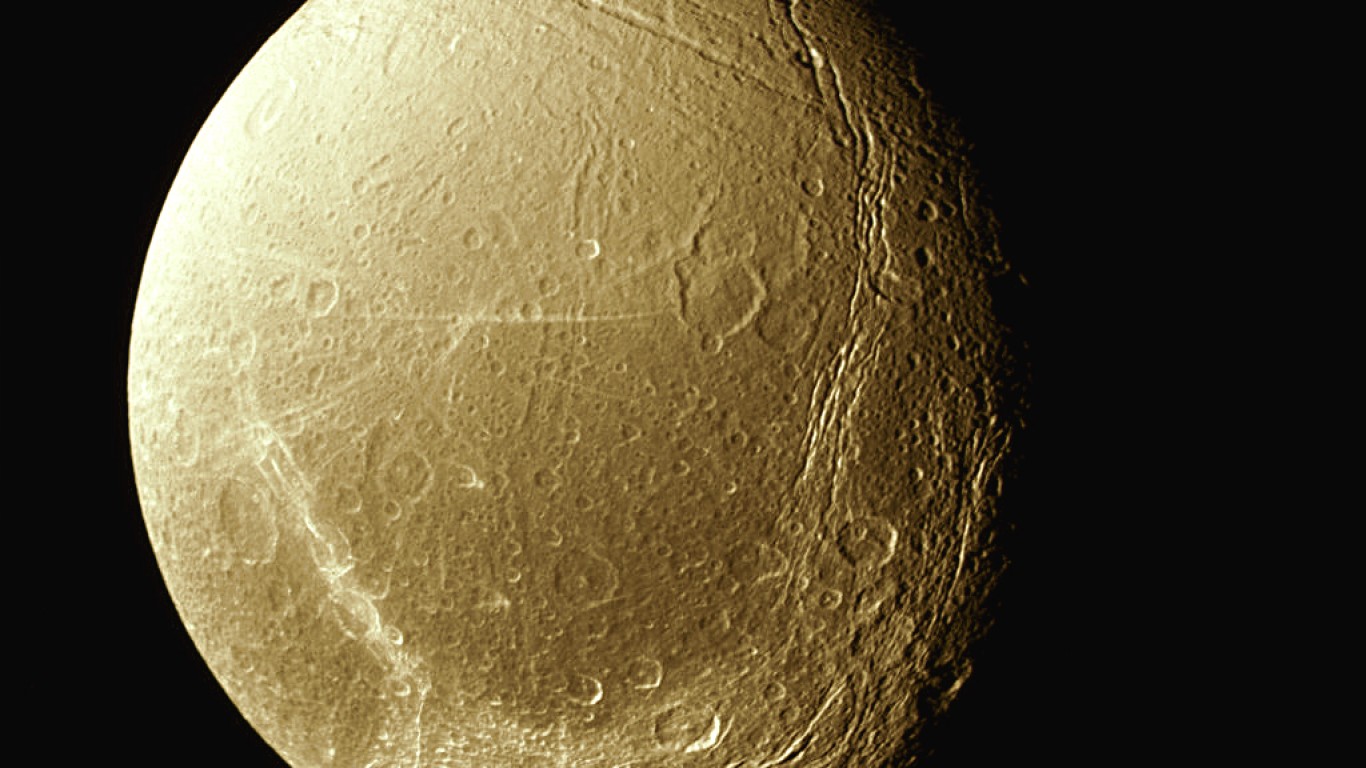
15. Dione
> Planet: Saturn
> Mean diameter: 1,123 km
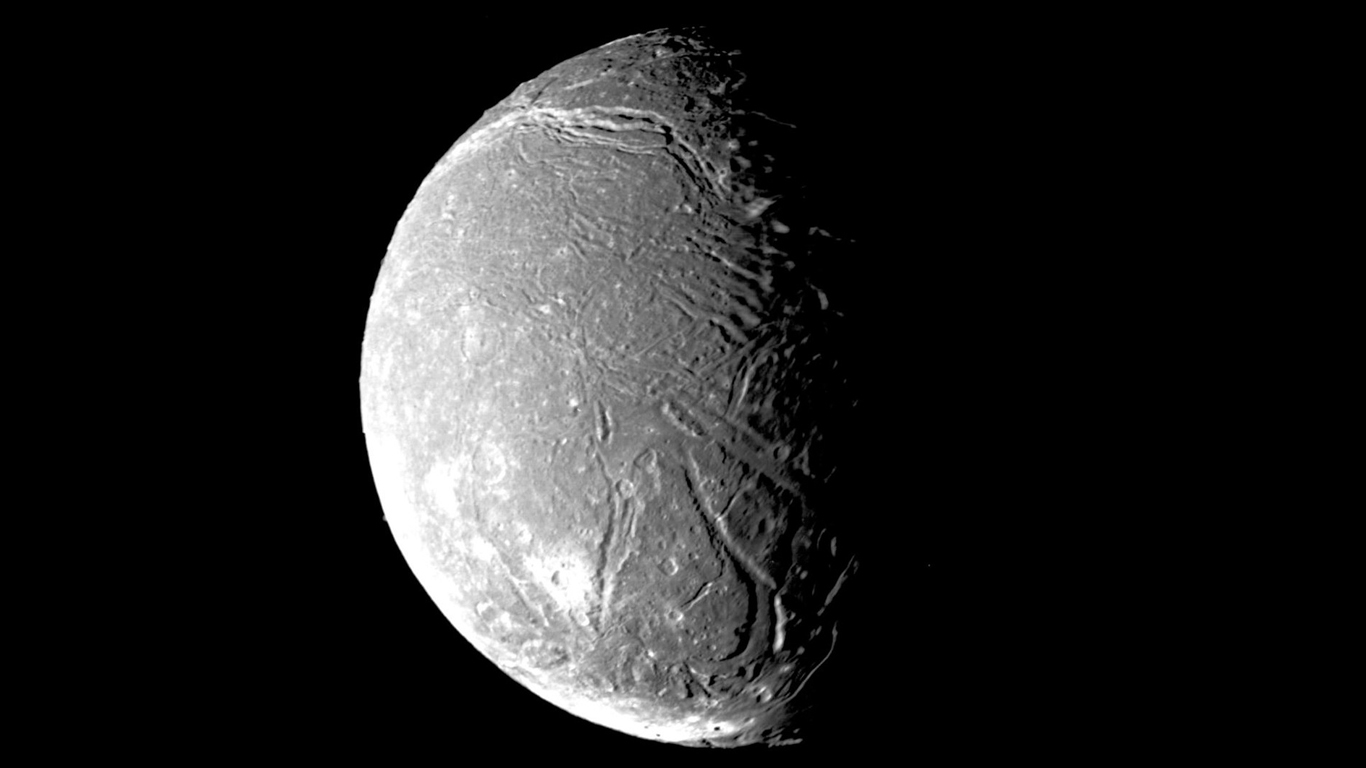
14. Ariel
> Planet: Uranus
> Mean diameter: 1,158 km
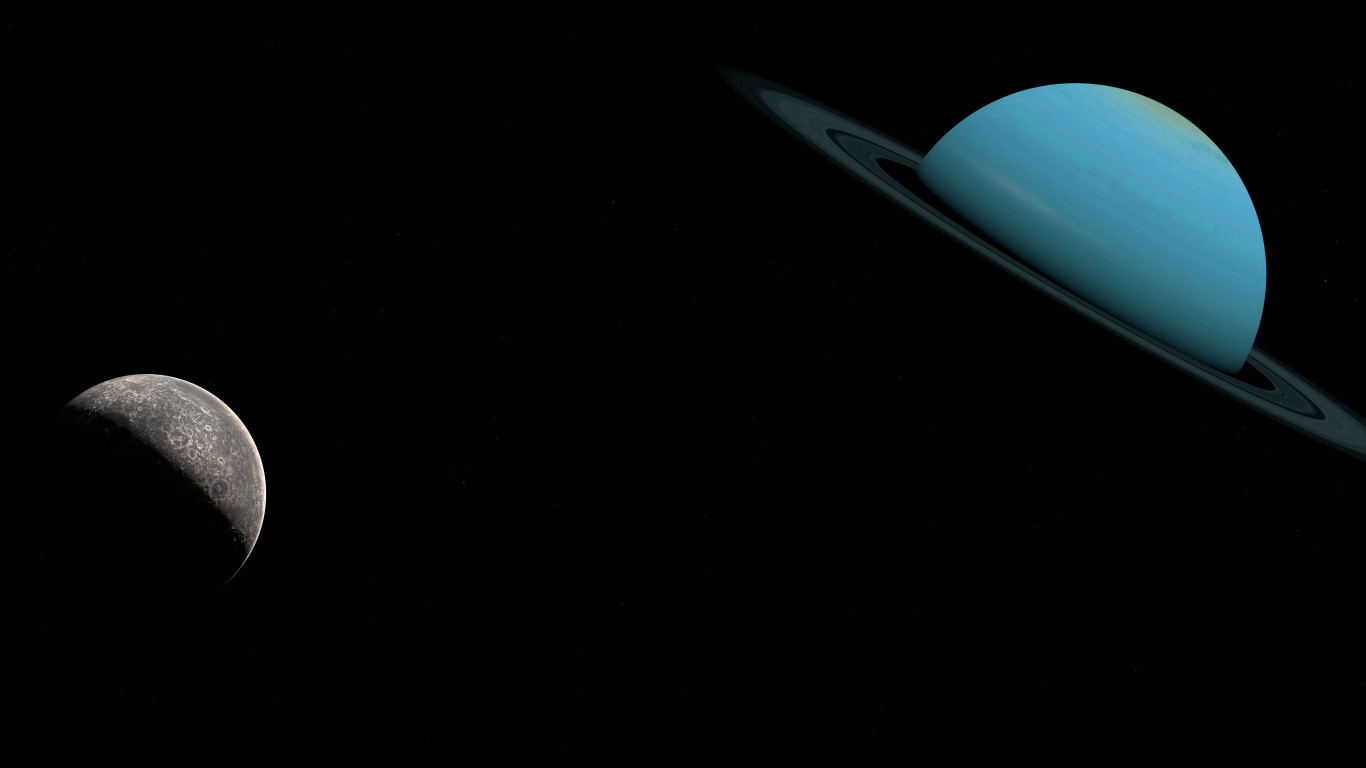
13. Umbriel
> Planet: Uranus
> Mean diameter: 1,169 km
[in-text-ad-2]

12. Charon
> Planet: Pluto
> Mean diameter: 1,207 km
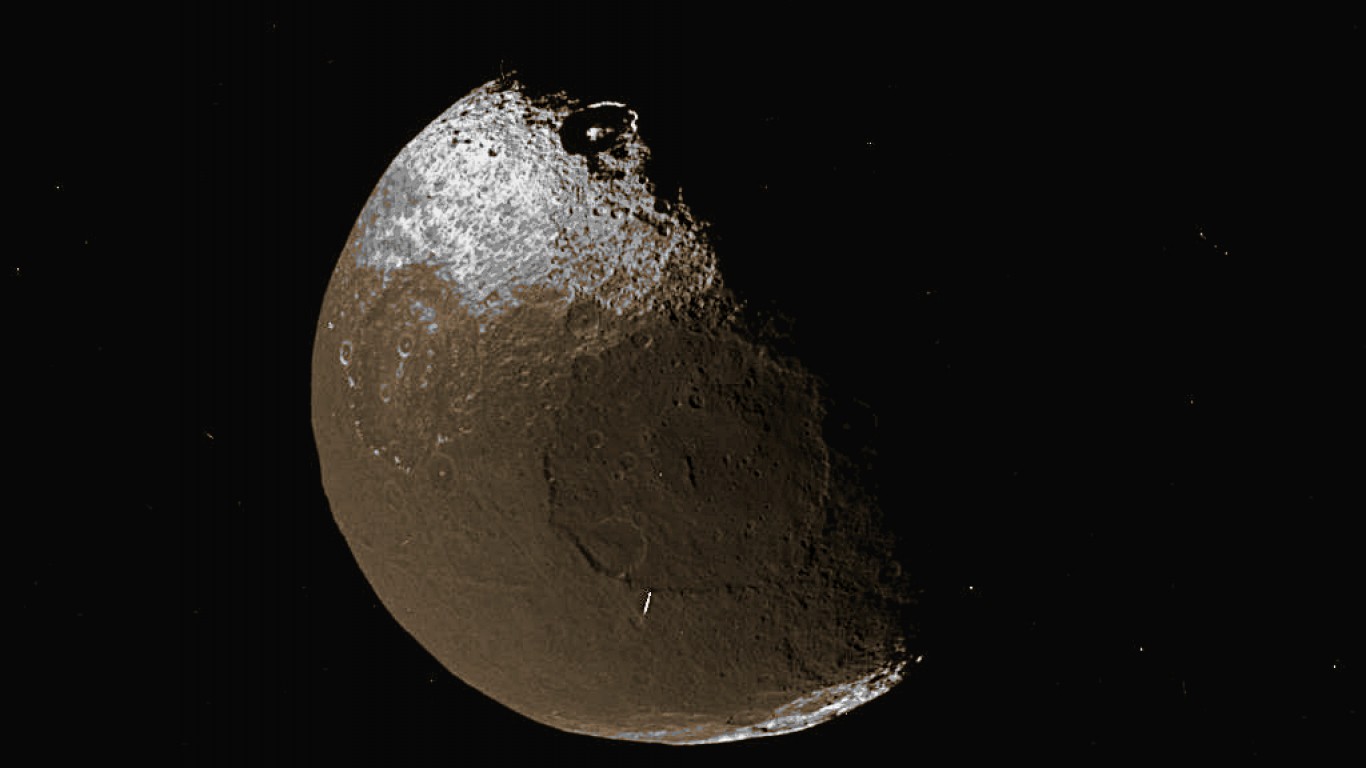
11. Iapetus
> Planet: Saturn
> Mean diameter: 1,471 km
[in-text-ad]
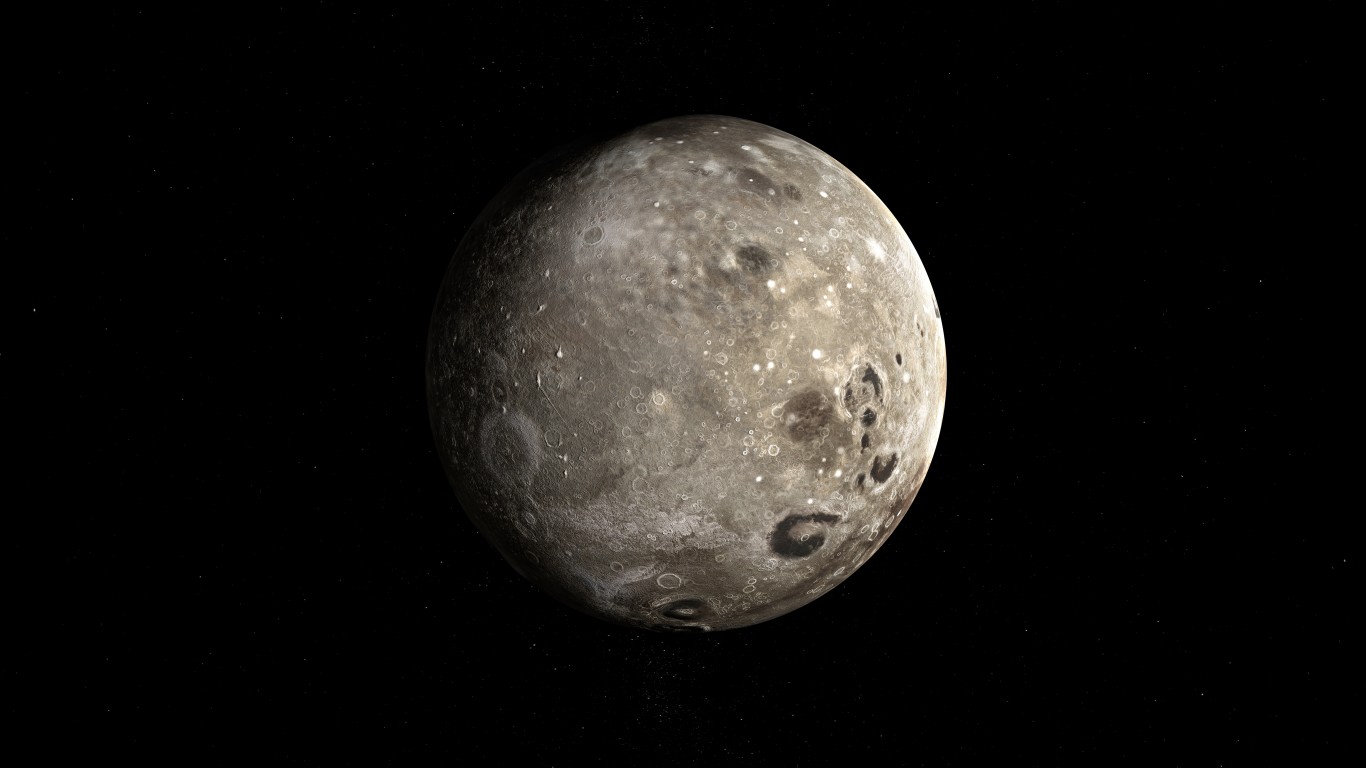
10. Oberon
> Planet: Uranus
> Mean diameter: 1,523 km
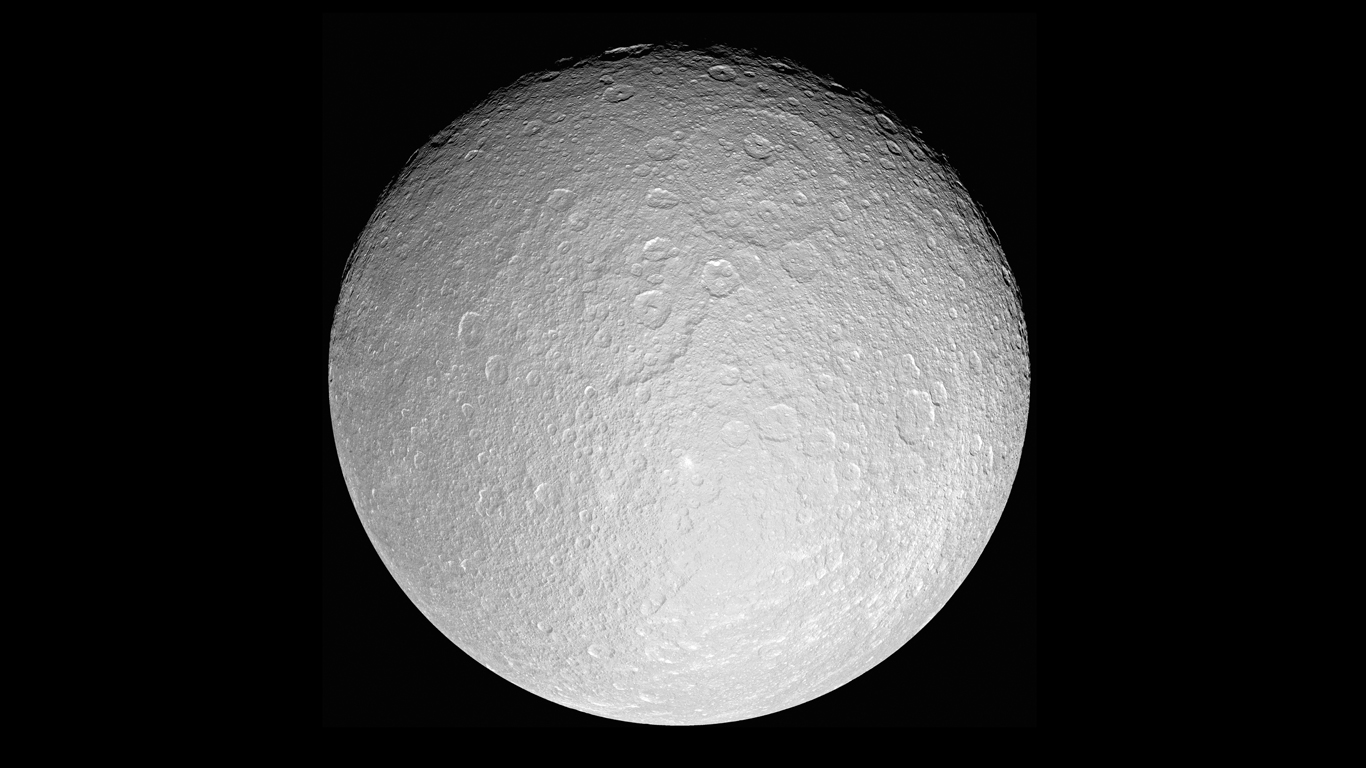
9. Rhea
> Planet: Saturn
> Mean diameter: 1,529 km
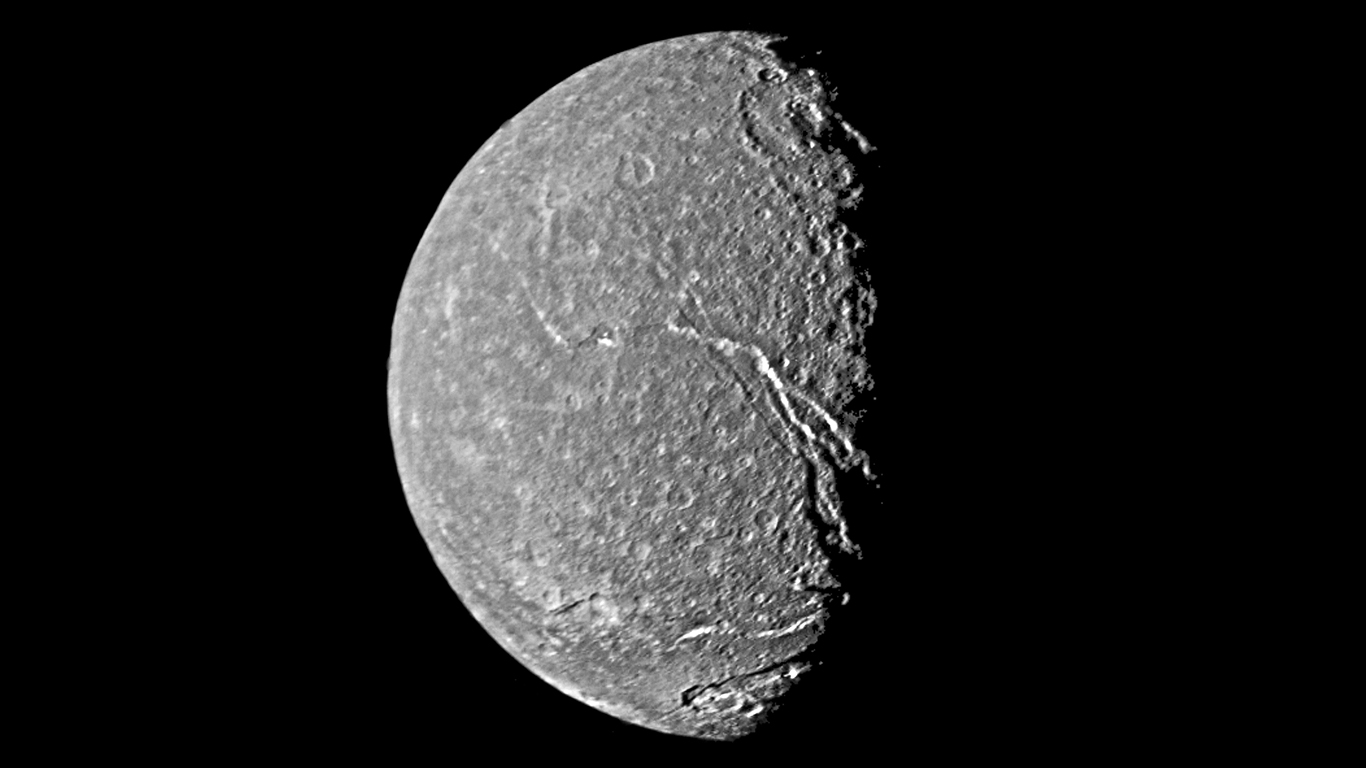
8. Titania
> Planet: Uranus
> Mean diameter: 1,578 km
[in-text-ad-2]
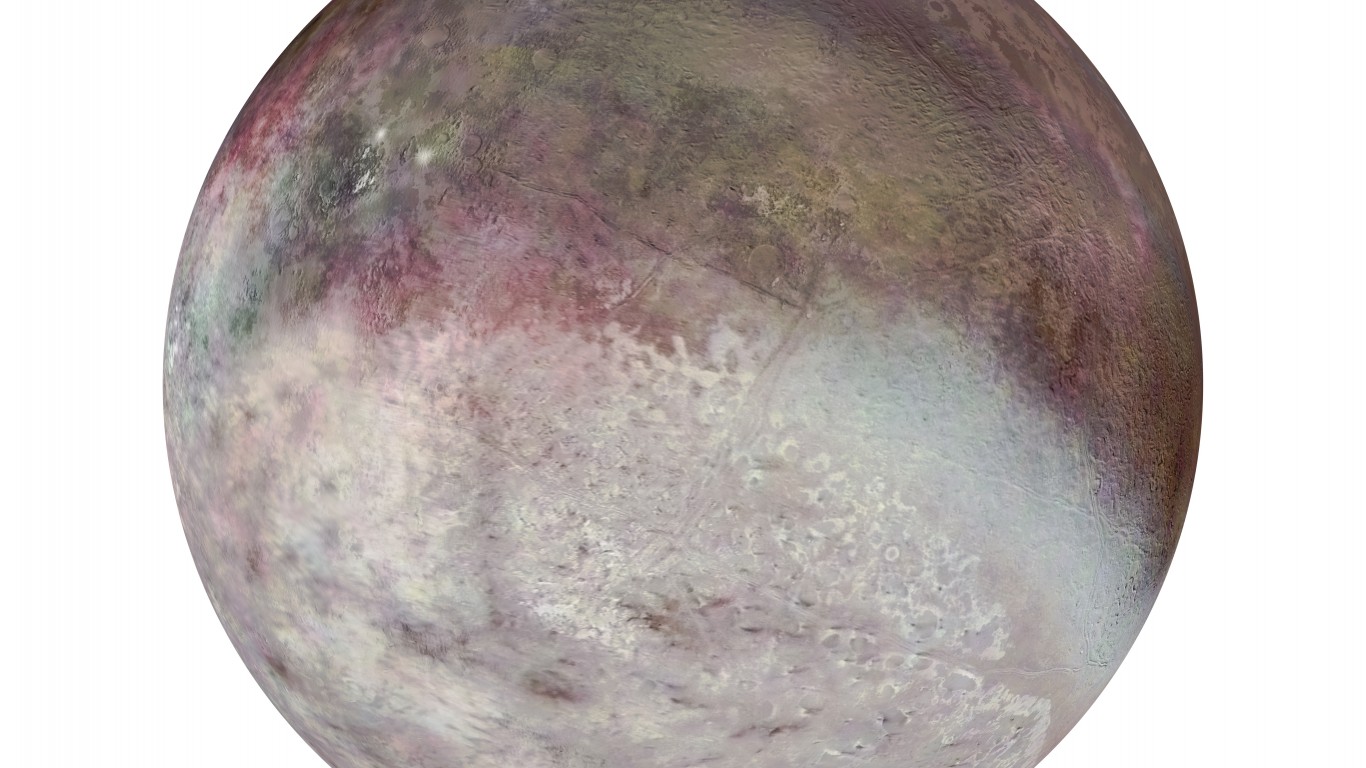
7. Triton
> Planet: Neptune
> Mean diameter: 2,707 km
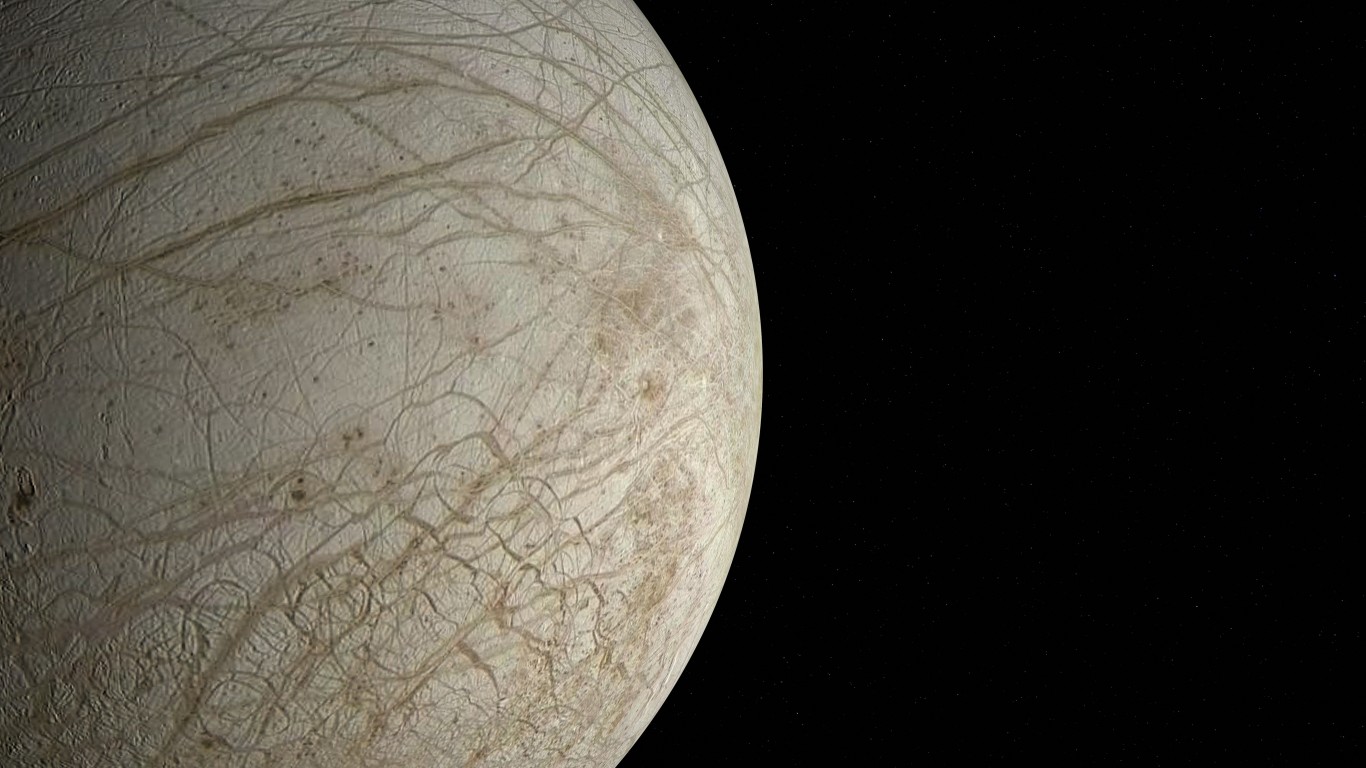
6. Europa
> Planet: Jupiter
> Mean diameter: 3,122 km
[in-text-ad]
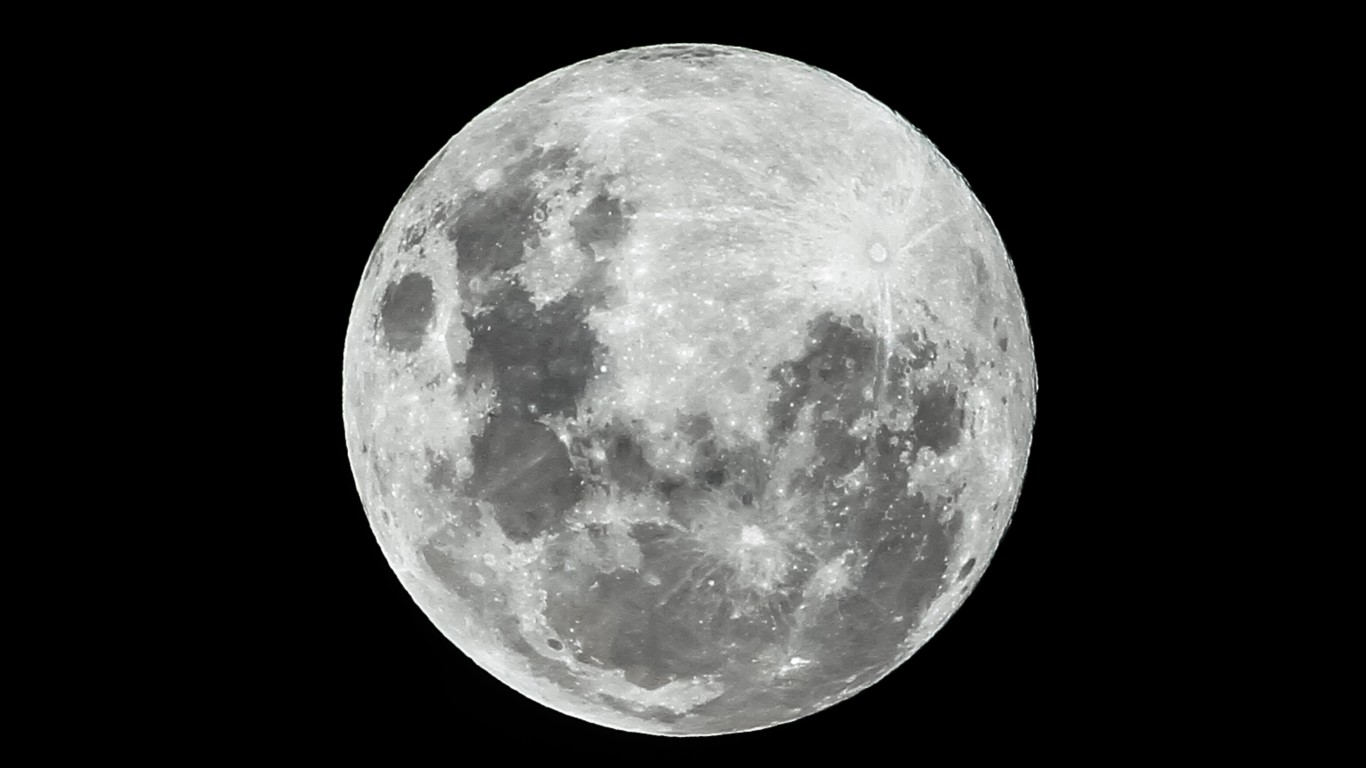
5. Moon
> Planet: Earth
> Mean diameter: 3,475 km
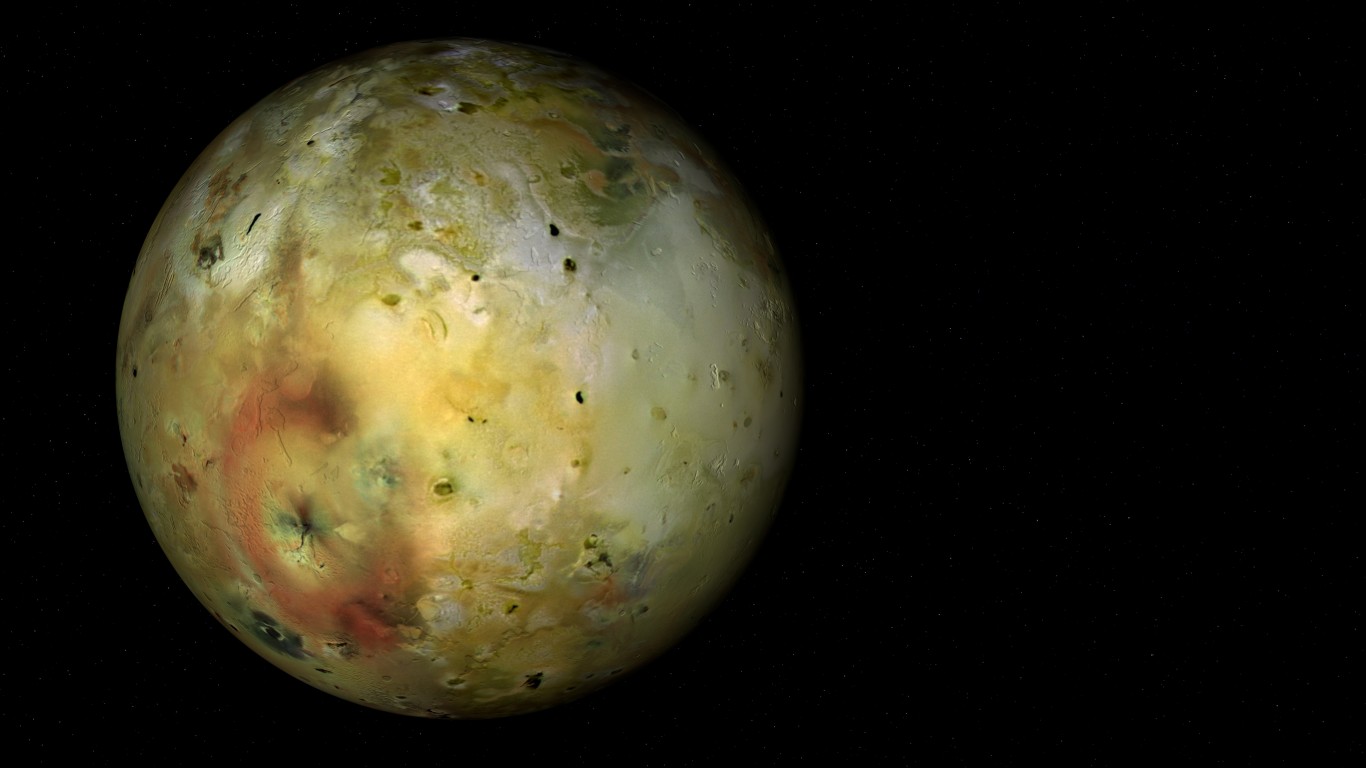
4. Io
> Planet: Jupiter
> Mean diameter: 3,643 km
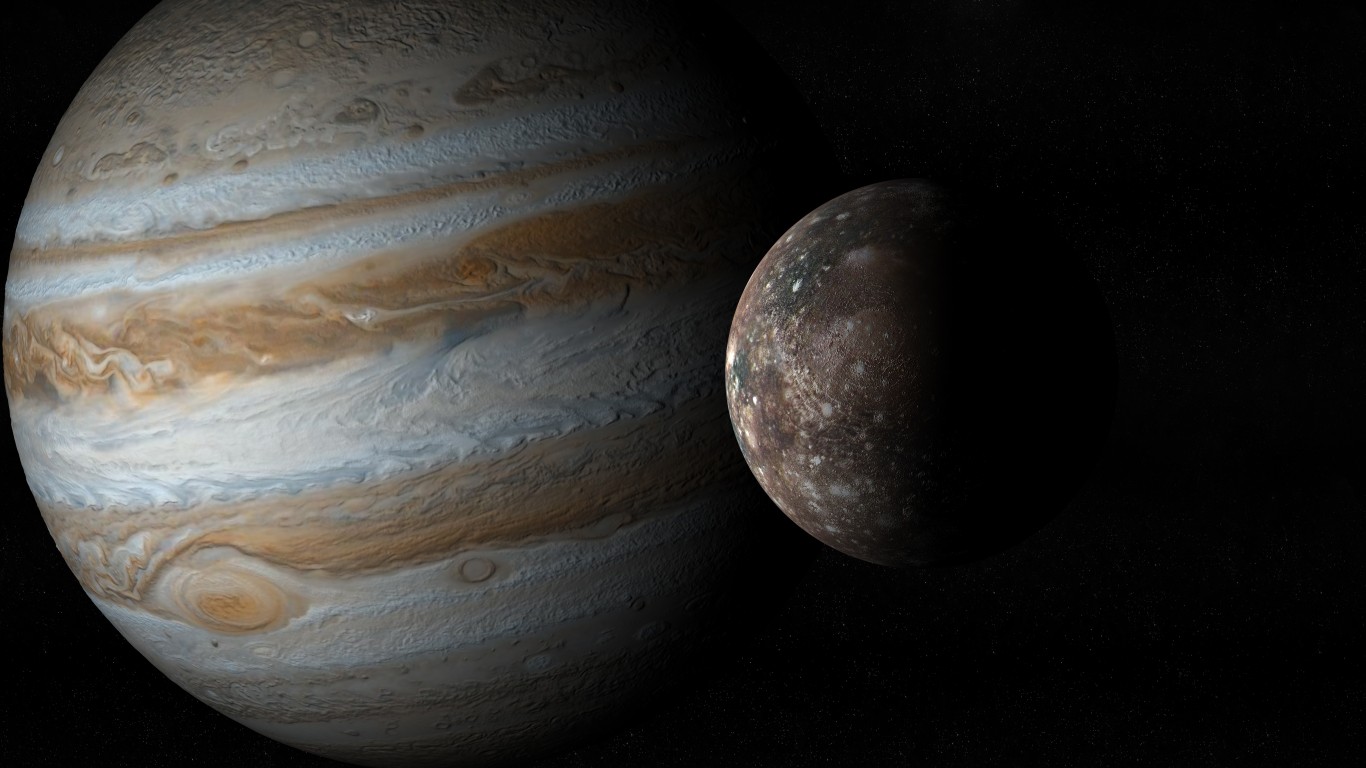
3. Callisto
> Planet: Jupiter
> Mean diameter: 4,821 km
[in-text-ad-2]
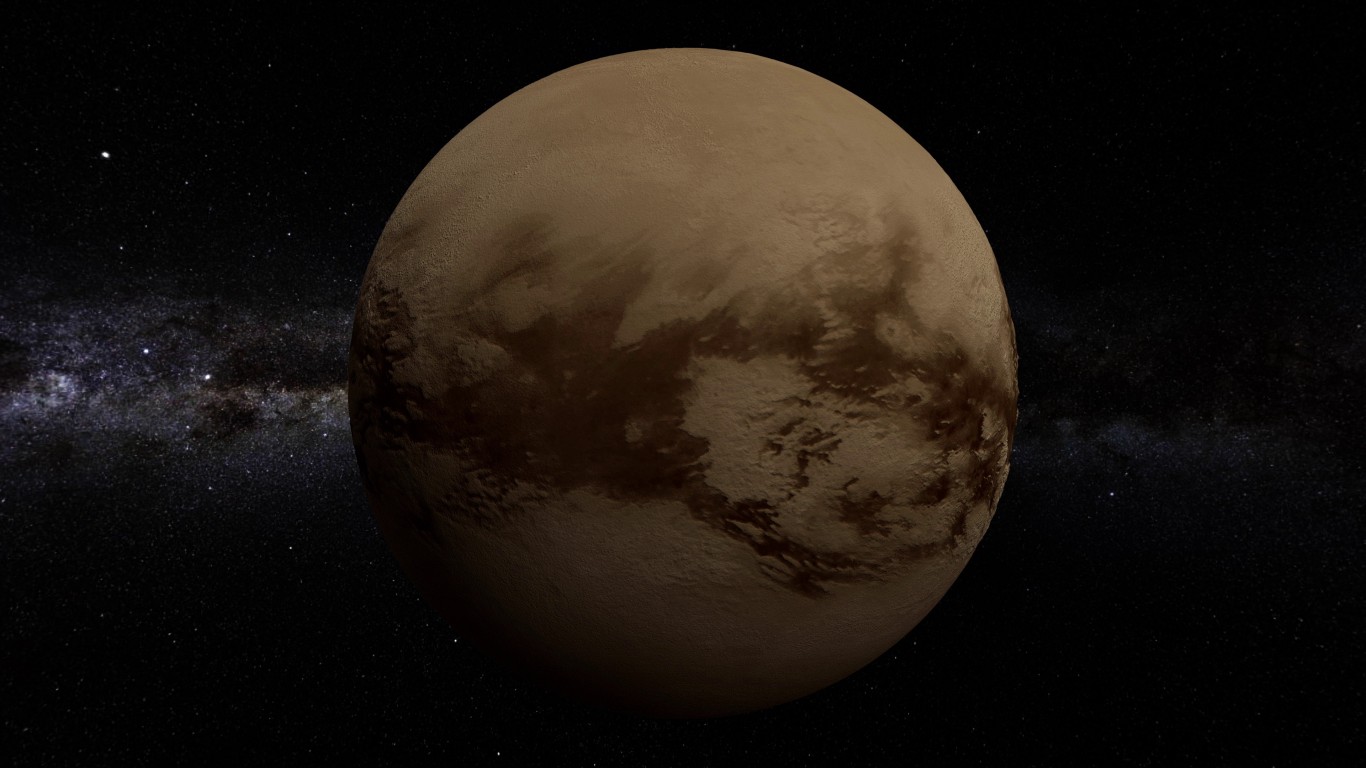
2. Titan
> Planet: Saturn
> Mean diameter: 5,150 km
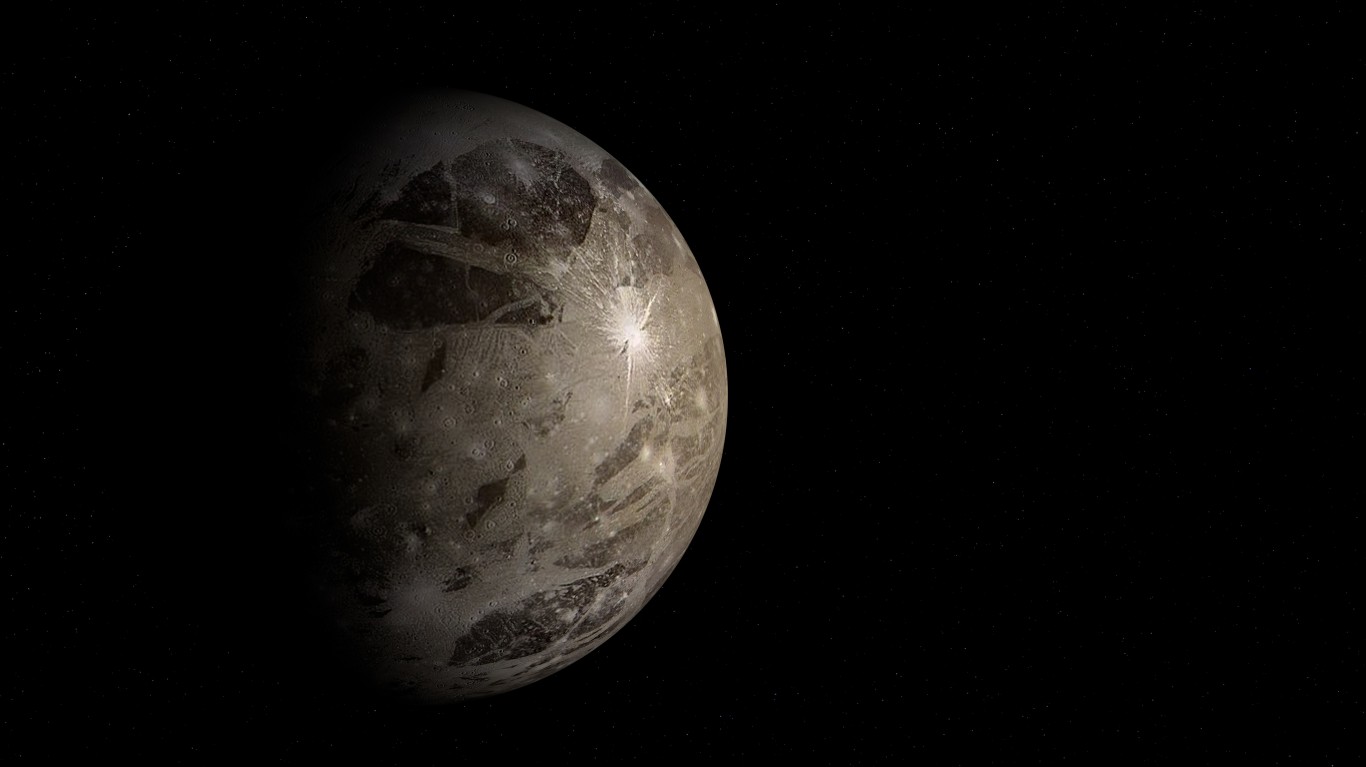
1. Ganymede
> Planet: Jupiter
> Mean diameter: 5,262 km
Take Charge of Your Retirement: Find the Right Financial Advisor For You in Minutes (Sponsor)
Retirement planning doesn’t have to feel overwhelming. The key is finding professional guidance—and we’ve made it easier than ever for you to connect with the right financial advisor for your unique needs.
Here’s how it works:
1️ Answer a Few Simple Questions
Tell us a bit about your goals and preferences—it only takes a few minutes!
2️ Get Your Top Advisor Matches
This tool matches you with qualified advisors who specialize in helping people like you achieve financial success.
3️ Choose Your Best Fit
Review their profiles, schedule an introductory meeting, and select the advisor who feels right for you.
Why wait? Start building the retirement you’ve always dreamed of. Click here to get started today!
Thank you for reading! Have some feedback for us?
Contact the 24/7 Wall St. editorial team.
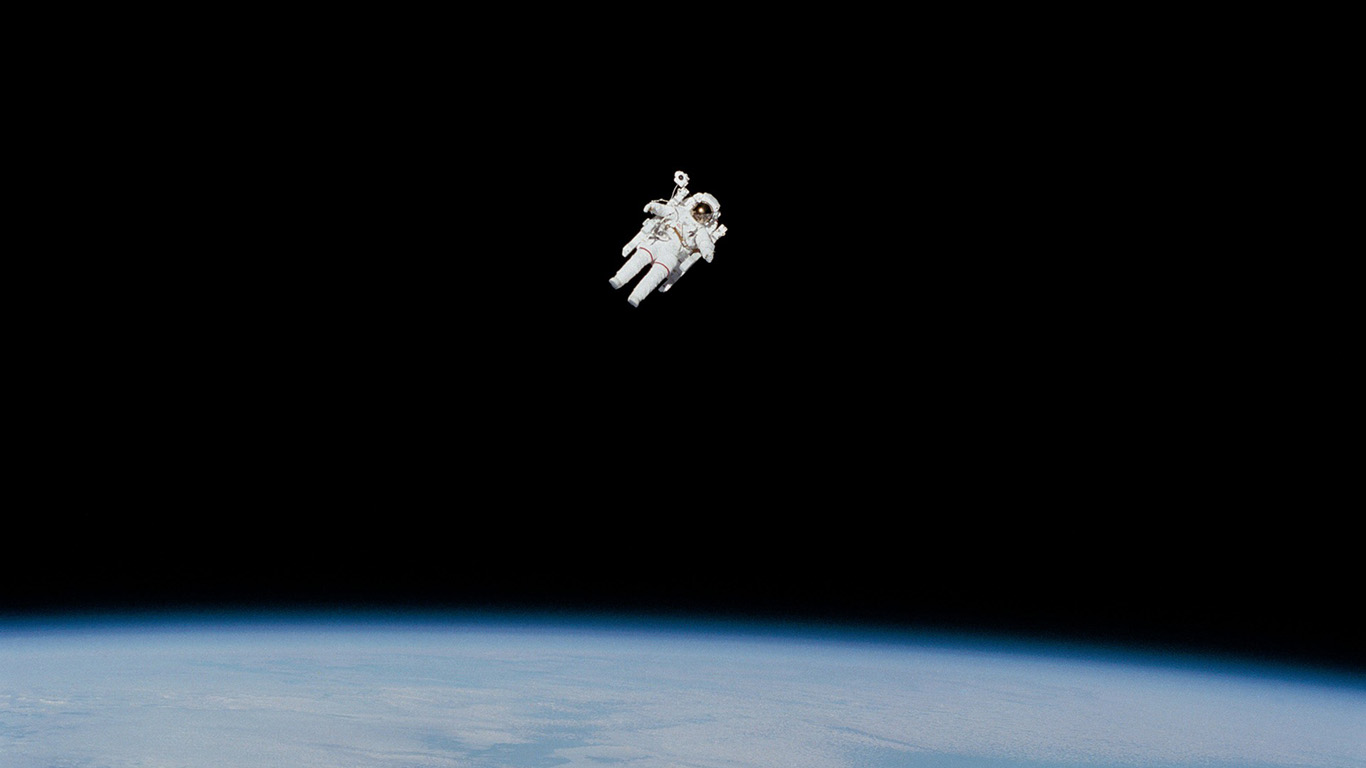 24/7 Wall St.
24/7 Wall St.
